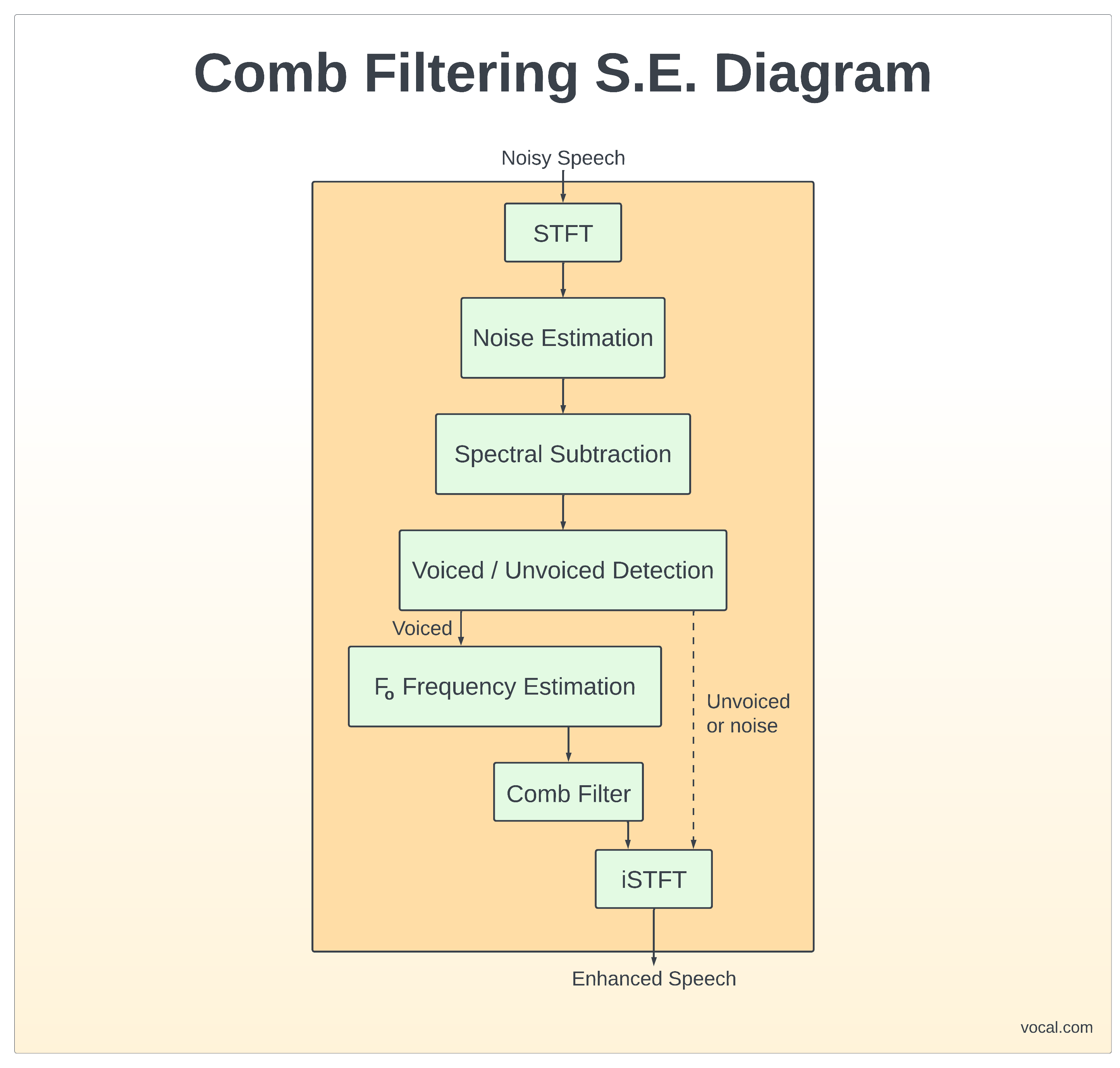Comb filter is a filter with multiple pass and stop bands. In acoustics, comb filtering is used to described the phenomena when two sound waves collide. These two sound waves can be in phase or out of phase at different frequencies. The resulting frequency response of the sound captured at the point of collision has periodic peaks and valleys, like a comb filter.
In speech enhancement, many approaches rely on the ability to estimate the noise spectrum and remove the estimated noise spectrum from the noisy speech signal. While these algorithms can be effective at removing the presence of the noise, they often fail to improve the intelligibility of speech. Voiced speech has a harmonic structure. Enhancing this structure will help improve the intelligibility of speech. By estimating the fundamental frequency of a signal, a comb filter can be designed to preserve the fundamental frequency and its associated harmonics, and attenuate the frequencies in between. The fundamental frequency of speech for the same talker is time variant, so this filter needs to be estimated continuously over time.
As shown in the block diagram, the noisy speech is transformed by the Short Time Fourier Transform (STFT), and performs noise estimation and spectral subtraction. The resulting signal is then evaluated to determine if the signal is in a voiced speech segment. If the signal is voiced, the fundamental frequency estimated to apply a comb filter.
VOCAL Technologies offers single channel and multi-channel voice quality enhancement solutions. Our custom implementations of such systems are meant to deliver optimum performance for your specific voice quality enhancement task.

VOCAL’s solution is available for the above platforms. Please contact us for specific supported platforms.
